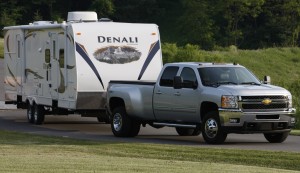
Car sales have been slammed by high unemployment, and the prospect is particularly poor for pickups and other large vehicles.
The ongoing economic crisis is having an impact on just about everything you can imagine, from restaurant sales to new car purchases. Indeed, a new study claims that there could be as much as 1.5 million fewer cars sold this year due to nagging unemployment.
The 2011 Automotive Outlook, by Detroit-based AlixPartners, projects that just 12.7 million cars, trucks and crossovers will be sold this year, well below earlier industry forecasts that had pressed well above the 13 million mark. Though the study expects sales to reach 13.6 million next year, that’s still well below the industry’s peak, which nipped the 17-million mark a decade ago.
“The good news,” said John Hoffecker, a managing director at AlixPartners, “is that most of the U.S. players now have their costs in line to capitalize on a slow, steady sales recovery.
At the same time, he warned, sluggish sales pose a financial strain on an industry “facing some truly momentous, and monumentally expensive decisions on everything from powertrain choices to emerging markets. The problem, added Hoffecker, is that, “Technologically, the auto industry could well be on the cusp of its biggest set of changes since the invention of the internal-combustion engine more than 100 years ago”
In a survey of 1,000 potential American car buyers, a full 83% said they have delayed purchasing a new vehicle for at least a year.
Unemployment is only one of the challenges to driving up demand. About one in five of the new vehicles sold in the U.S. are typically financed by a rise in home value appreciation, a ratio likely to decline due to the continuing stagnation of the American housing market.
What’s distinctly different today is that even with weak sales in the U.S. and other key established markets, such as Europe and Japan, automakers are turning surprisingly solid profits – with margins clustered between 4.3% and 5.7%, noted the study.
What it describes as a competitive divergence, “will require big leaps forward in differentiators such as consumer-focused innovation, product-development excellence, truly strategic partnerships at various places around the globe, careful brand-building and, perhaps above all else, a general focus on speed.”
The far-reaching study also looked at shifts in the type of products American motorists will be buying in the years ahead.
The Automotive Outlook anticipates that small cars will experience a 13% annual growth rate between now and 2015, while small crossovers will grow 7%. Large cars, trucks and crossovers, by comparison, will gain just 2% compounded annually. Pickups, in particular, are expected to remain well below their 2.9 million peak, set in 2006.
